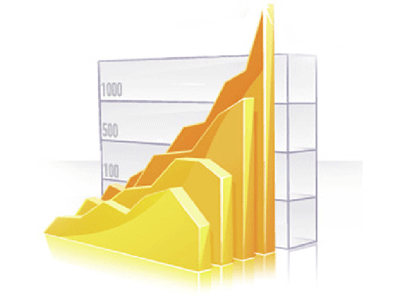 There are many investing and trading innovations flooding the market these days. A concrete example of this is ETFs or exchange traded funds. When done right, ETF trading could be the right vehicle for you. What are ETFs? ETFs are securities that are created to behave like a specific index or a collection of different securities. This means that the ETF will move in close tandem with the securities it is designed to follow. How Does ETFs work? Big financial and money management firms are the ones who create clear procedures and exact composition of an ETF. They assemble a basket of stocks in the same sector or industry and send it to a custodial bank. An investor can buy a share of the ETF from the custodial bank and sell them to the open market or major stock exchanges. For example, Standard and Poor created the first ETF in 1993 to mimic or track the performance of S&P 500. Itís called Standard and Poorís Deposit Receipt (SPDR). Using the SPDR, investors have a way to diversify their portfolio without having to buy number of securities or index fund. Similarly, traders can also have the advantage of diversification since the ETF can be bought and sold all throughout the trading day just like an ordinary stock. What are the Advantages of Trading ETFs? There are many trading vehicles a trader can use these days. Below are the advantages of trading ETFs as opposed to trading other securities and mutual funds. Diversification In the world of finance, diversification has become a clichť. In the world of trading, itís one of the best ways to manage risks. Since an ETF tracks and follows the performance of a basket of securities, an industry or a given market sector, a trader has the advantage of diversified traded asset even if he has to buy or sell just one ETF. For example, itís much more convenient to trade United States Oil Fund (NYSE: USO) if you want to trade in this market sector than if you have to trade a couple of stocks of different oil companies. Cost Efficient Compared to mutual funds or other diversified financial instruments, ETFs are more cost efficient since these kind of instrument are not actively managed. Thus, ETFs have lower expense ratios and you donít have to pay for front or back-end loads. Aside from this, if youíre going to invest in a mutual fund, thereís a minimum investment requirement; whereas you can trade or invest as little as one share of an ETF. Liquidity ETFs can be bought and sold frequently all throughout the trading day. Average trading volumes of ETFs are in the hundreds of thousands range so it is very liquid. On the contrary, mutual funds are priced at the end of the day. Thus, if day trading is your game, ETFs is the perfect vehicle in terms of diversified assets. What are the Popular ETFs that can be Actively Traded? Here are some of the most actively traded and largest ETFs that are traded on the market these days. Standard & Poorís 500 Index Depository Receipts (SPDR) This is the first and still is the largest ETF in the market. This ETF tracks the performance of S&P 500 index Ė an index which measures the average performance of top 500 large capitalization companies in the US. NASDAQ 100 Index Tracking Stock (QQQ) This ETF follows the performance of NASDAQ 100 index. This index represents the 100 largest market capitalizations on the NASDAQ stock market. If you are a trader who prefers to stay away from trading financial or investment companies, this ETF is the perfect vehicle for you. QQQ tracks companies within the technology, biotechnology, telecommunications, and retail/wholesale sector. DIAMONDS Trust (DIA) This ETF tracks the Dow Jones Industrial Average. This is a composed of 30 blue chips companies. Thus, if you prefer trading and investing in diverse old-line companies with proven track record, this is the best ETF to trade. Total Stock Market Vipers (VTI) If you want the broadest composition of stocks, VTI is one of the best options for you. The Vanguard Group assembled this ETF that tracks the performance of the Wilshire 5000 broad market index. This index covers a wide array of market sector and includes most of US publicly traded companies. It provides an excellent barometer of the entire US economy. iShares S & P 500 (IVV) An alternative to SPDR, IVV is an inexpensive version of an ETF that also tracks the S&P 500 index. This ETF is assembled by Barclays to measure the performance of US large cap corporations. If you want a transparency and liquidity in trading diversified asset at a modest cost, ETF trading is the best option for you. For one, fees that you are expected to pay with every transactions are clearly laid out. Another, you know that you can exit a trade at anytime you want. And lastly, the price of an ETF does not deviate much from the underlying assetís price because when it does deviate, another trader would step in and derive profit from the price difference, bringing the price back to more or less similar to the underlying assetís price.
|

|
|
|
|